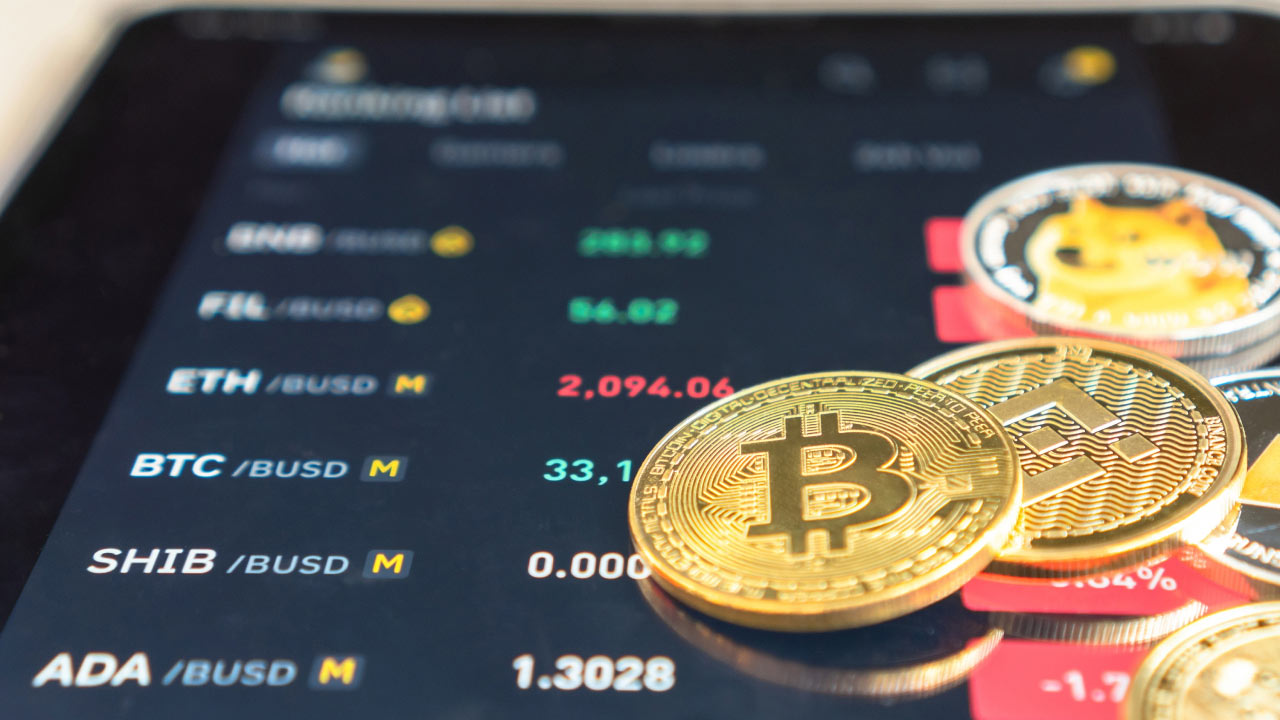The crypto market is volatile, and it can often attract fraudsters. Protecting assets from scams, theft, and security breaches requires implementing robust security practices. Traders need to be aware of the potential risks when trading cryptocurrencies to ensure a seamless trading experience.
In this article, we discuss the safest ways to trade cryptocurrencies.
Top 5 ways to trade cryptocurrencies
Crypto CFDs (Contracts for Difference)
Crypto CFDs are financial derivatives that allow traders to speculate on the price movements of cryptocurrencies without actually owning the underlying assets. When one trades crypto CFDs, they enter into a contract with a broker to exchange the difference in the cryptocurrency's price between the time the contract is opened and closed.
CFDs offer the advantage of leverage, allowing traders to control a more prominent position with a smaller capital investment. However, this also involves higher risk due to potential losses exceeding the initial investment.
How to make the first trade:
- Choose a reputable broker that offers crypto CFDs.
- Create an account and deposit funds.
- Select the cryptocurrency one wants to trade, choose the position size, set the stop-loss levels, and execute the trade.
Crypto futures
Crypto futures are standardized contracts that obligate traders to purchase or dispose of a specific cryptocurrency at a predetermined price and date in the future. These contracts are traded on futures exchanges and enable participants to speculate on the price direction of cryptocurrencies.
Futures contracts can be used for both hedging and speculative purposes, and they provide a way to trade cryptocurrencies with leverage. However, like CFDs, they carry a risk of significant losses.
Blockchain ETFs (Exchange-Traded Funds)
Blockchain ETFs are investment funds that are traded on stock exchanges and are designed to track the performance of a basket of cryptocurrencies or blockchain-related assets. These ETFs provide a way for investors to gain exposure to the crypto market without directly owning cryptocurrencies.
Investing in blockchain ETFs can be a more diversified and less risky approach compared to trading individual cryptocurrencies. These funds often include a mix of crypto assets, making them a way to spread risk.
However, sudden and significant price swings in the underlying assets can lead to rapid changes in the value of the ETF, potentially resulting in financial losses for investors. Additionally, regulatory uncertainties in the cryptocurrency space can impact the performance of Blockchain ETFs.
Crypto funds
Crypto funds are actively managed investment vehicles that pool investors' capital and allocate it to various cryptocurrencies and related assets. There are different types of crypto funds, including hedge, venture capital, and index funds.
Investing in crypto funds allows traders to benefit from the expertise of professional fund managers and gain exposure to the broader crypto market.
However, the fees associated with crypto funds can vary, and high management fees or hidden costs can erode potential returns. Furthermore, regulatory uncertainties, technological challenges, and market sentiment can also contribute to the overall risk profile of crypto funds.
Crypto exchanges
Crypto exchanges are online platforms where traders can trade cryptocurrencies directly. They offer a wide range of digital assets, including Bitcoin, Ethereum, and various altcoins, and allow users to exchange one cryptocurrency for another or trade against fiat currencies like USD or EUR.
Trading on cryptocurrency exchanges can be done using different order types, and it offers the most direct access to the underlying assets. However, it requires careful management of one's own wallet and protection measures to protect the holdings.
However, there are still risks associated with crypto exchanges such as the vulnerability to security breaches, as exchanges are frequent targets for hacking attempts.
Tips to cautiously trade cryptocurrencies
Avoid pump-and-dump schemes
Be cautious of sudden, large price spikes in relatively unknown or low-market-cap cryptocurrencies. These spikes can result from pump-and-dump schemes, where a group artificially inflates the price to attract unsuspecting investors before selling off their holdings. Always research and avoid FOMO (Fear of Missing Out) when investing.
Enable two-factor authentication (2FA)
Use 2FA on the cryptocurrency exchange and wallet accounts. It adds an extra layer of protection by requiring a second verification step, often through a mobile app or SMS code. This helps protect the account from unauthorized access, even if the password is compromised.
Choose a reputable exchange
Select a well-established and reputable cryptocurrency exchange with a track record of protection and compliance. Research the exchange's history, protection features, and user feedback. Well-known exchanges invest in robust protective measures to protect cryptocurrency funds.
Consider cold storage solutions
Consider using cold storage for a significant portion of the cryptocurrency holdings. Cold storage involves storing crypto offline, typically on hardware wallets or paper wallets. This method is highly secure as it is not connected to the internet, making it less vulnerable to hacking or cyberattacks.
Ensure regulatory compliance
Stay informed about cryptocurrency regulations in the respective region and ensure one complies with relevant laws. Register with reputable exchanges that follow Anti-Money Laundering (AML) and Combating the Financing of Terrorism (CTF) regulations, as these measures help prevent illegal activities and provide added protection for traders.
Diversify trading portfolio with cryptocurrencies
Trading cryptocurrencies involves conducting thorough research and implementing strong trading practices like 2FA. However, risks like extreme price volatility, regulatory changes, and scams are ever-present in the cryptocurrency market. Staying vigilant and informed is essential to navigate the crypto-zone's high-reward, high-risk financial landscape.
Disclaimer:
All material published on our website is intended for informational purposes only and should not be considered personal advice or recommendation. As margin FX/CFDs are highly leveraged products, your gains and losses are magnified, and you could lose substantially more than your initial deposit. Investing in margin FX/CFDs does not give you any entitlements or rights to the underlying assets (e.g. the right to receive dividend payments). CFDs carry a high risk of investment loss.

